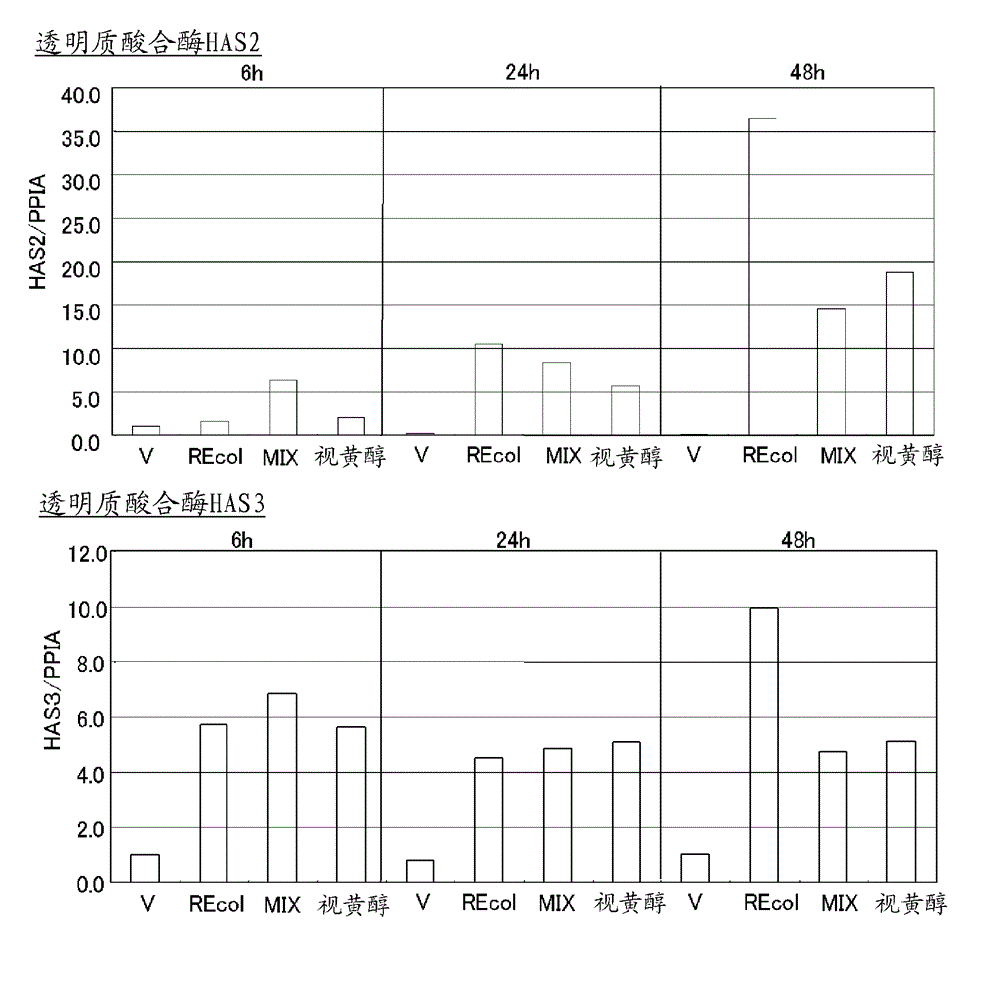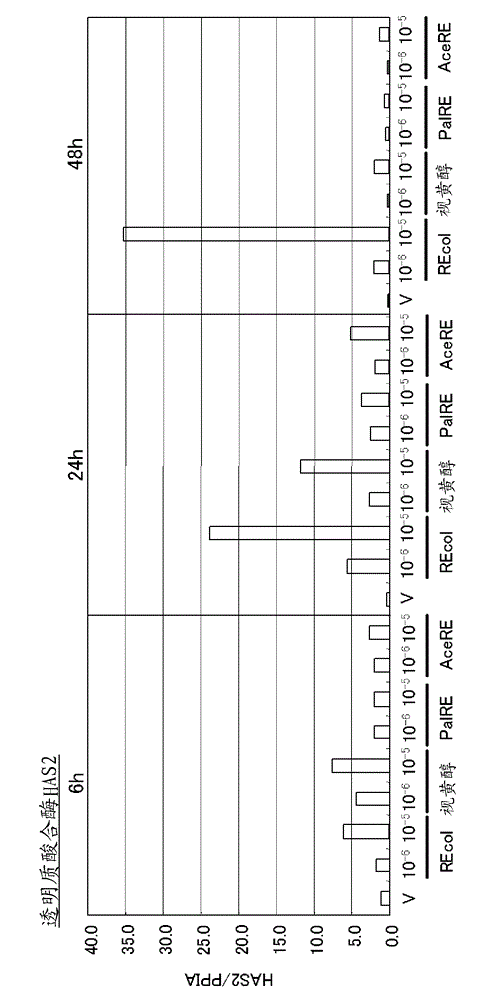Retinol-modified collagen, method for producing same, and external composition for skin containing same
A retinol and collagen technology, which is applied in the preparation method of peptides, medical preparations containing active ingredients, skin diseases, etc., can solve the problem of not being able to obtain satisfactory anti-aging effects on the skin, and achieve excellent anti-wrinkle effects , Excellent safety and excellent affinity
- Summary
- Abstract
- Description
- Claims
- Application Information
AI Technical Summary
Problems solved by technology
Method used
Image
Examples
preparation example Construction
[0103] In the method for producing retinol-modified collagen of the present invention, the collagen, dicarboxylic acid and its anhydride, and retinol described above in the description of retinol-modified collagen are used.
[0104] In addition, the coupling of dicarboxylic acid or its anhydride to collagen can be carried out by a method known per se using the solvent, dehydration condensation agent, and condensation assistant as described above for synthesizing collagen.
[0105] The addition reaction to dicarboxylic acid-coupled collagen is usually carried out under the conditions of adding 1 to 2 equivalents of DIPEA to 1 mole of peptide units in DMF (dimethylformamide) or the like. Here, the reaction of binding retinol to dicarboxylic acid-coupled collagen was carried out using this condition, but it was found that almost no retinol was added. Surprisingly, it was found that when tertiary amines are used as solvents in the step of combining retinol with dicarboxylic acid g...
Embodiment
[0112] Next, examples are given to further describe the present invention in detail, and they are for the purpose of illustration, and the present invention is not limited thereto. In addition, unless otherwise stated, % represents mass %.
preparation example
[0114] Synthesis of Retinol-modified Collagen
[0115] (1) Synthesis reaction of poly(Pro-Hyp-Gly)
[0116] Dissolve Pro-Hyp-Gly (PHG) tripeptide (Peptide Research Institute Co., Ltd.) in 10mM phosphate buffer (pH7.4) and stir, add 1-hydroxybenzotriazole (HOBt) for stirring, and cool to below 5°C. Add 1-ethyl-3-(3-dimethylaminopropyl) carbodiimide hydrochloride, let it stand for 90 minutes (reaction), warm, add 10mM phosphate buffered saline (PBS; pH7.4, containing 0.15M NaCl) to stop the reaction. After dialysis, the reactant was freeze-dried to obtain spongy synthetic collagen.
[0117] (2) Evaluation of Poly(Pro-Hyp-Gly) Synthesis
[0118] The obtained synthetic collagen (poly-PHG) was subjected to gel permeation chromatography (GE ヘルスケアジャパン Co., Ltd., AKTA purifier system, column: Superdex 200HRGL, flow rate: 0.5ml / min, eluent: 10mM phosphate buffered saline ( PBS; pH 7.4, containing 0.15M NaCl)) for molecular weight determination. As a result, it was confirmed that ...
PUM
 Login to View More
Login to View More Abstract
Description
Claims
Application Information
 Login to View More
Login to View More - R&D
- Intellectual Property
- Life Sciences
- Materials
- Tech Scout
- Unparalleled Data Quality
- Higher Quality Content
- 60% Fewer Hallucinations
Browse by: Latest US Patents, China's latest patents, Technical Efficacy Thesaurus, Application Domain, Technology Topic, Popular Technical Reports.
© 2025 PatSnap. All rights reserved.Legal|Privacy policy|Modern Slavery Act Transparency Statement|Sitemap|About US| Contact US: help@patsnap.com



